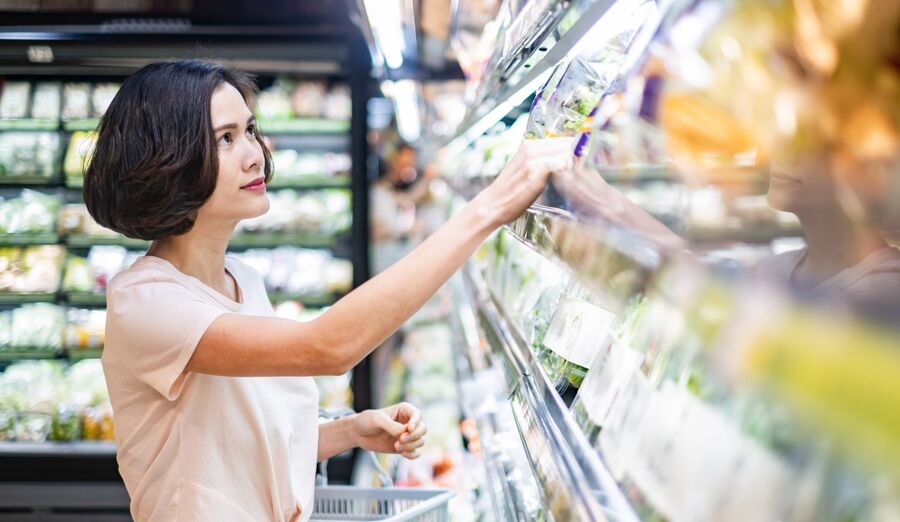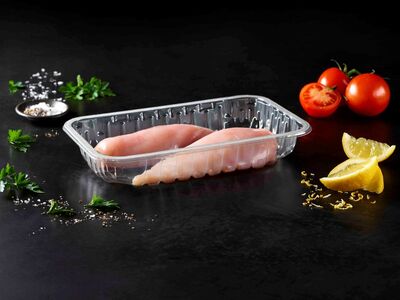Why plastic still matters: Balancing food safety, sustainability and shelf life

There’s no such thing as the perfect packaging material – if there were, we’d all be using it. Every substrate has strengths and trade-offs, depending on the product, application and supply chain. Rather than seeking to replace plastic across the board, the challenge is to use it more intelligently. When designed for circularity and backed by effective recycling systems, plastic can play a critical role in balancing food safety, extended shelf life and sustainability.
In recent years, in the race to reduce plastic, brands and policymakers alike have explored alternatives to plastic, from paper and fibre, to compostables.. While these materials each have a role to play, the conversation often overlooks the complexity behind packaging decisions. There’s no one-size-fits-all solution, and each choice brings different impacts on energy use, food waste, carbon footprint and overall resource efficiency. For kp and its partners, plastic isn’t the problem. The problem is waste - and that’s what we’re designing out.
Share this story
Plastic’s core strength: food protection and hygiene
Packaging exists to protect the product, and few materials do that more efficiently than plastic. It forms a robust barrier against microbes, moisture, UV light and physical impact. From production lines to long-distance logistics, plastic packaging ensures food arrives fresh and intact, shielding it from cross-contamination, crushing, leaks, or degradation. That means fewer damaged shipments, fewer store-level write-offs, and a safer end product for consumers.
At kp Food Packaging, we design packaging that puts protection first. But we’re also pushing what protection can mean in a circular economy - using fewer resources, less material, and more recycled content.
At kp Food Packaging, we design packaging that puts protection first. But we’re also pushing what protection can mean in a circular economy - using fewer resources, less material, and more recycled content.
Fighting food waste at scale
Globally, the equivalent of a billion meals a day¹ is lost through food waste, according to data from the World Food Programme, with a total loss to the global economy of around a trillion dollars. What’s more, food waste contributes around 10% of global greenhouse gas emissions – almost five times that of the aviation industry – making it a high priority challenge in global sustainability.
Advanced plastic packaging extends shelf life dramatically, helping to reduce the potential for waste. In Europe² , where packaging systems are advanced, food loss is around 3%, compared to up to 40% in developing regions lacking effective packaging, logistics and transport solutions.
Plastic is uniquely positioned to help reduce this. It can extend shelf life dramatically.
It’s not about overpackaging. It’s about ‘right-packaging’ - using the best material to protect what’s inside. And, when that product is a high-emission, high-resource item like food, that protection is true sustainability.
It’s not about overpackaging. It’s about ‘right-packaging’ - using the best material to protect what’s inside. And, when that product is a high-emission, high-resource item like food, that protection is true sustainability.
Efficiency without compromise
Beyond protection, plastic delivers resource efficiency. It’s lightweight, strong, and space-efficient, helping to cut transport emissions and reduce material usage. Replacing plastic with alternative materials across all food packaging could³ double energy consumption and nearly triple the associated greenhouse gas emissions.
At kp, we continue to engineer lighter and smarter formats, without compromising on performance.
At kp, we continue to engineer lighter and smarter formats, without compromising on performance.
Redesigning for circularity
Plastic’s value doesn’t stop at its first use. With the right circular economy systems in place, it’s a material that can - and should - be kept in the loop. That’s the idea behind kp’s ‘Investing in Better’ strategy.
In 2024, nearly 40% of kp Food Packaging’s plastic packaging contained post-consumer recycled (PCR) content, and 12.5% of that came from our closed loop kp Tray2Tray® initiative. This programme recycles used food trays into new ones, proving that circularity at scale is not just aspirational, but operational.
In 2024, nearly 40% of kp Food Packaging’s plastic packaging contained post-consumer recycled (PCR) content, and 12.5% of that came from our closed loop kp Tray2Tray® initiative. This programme recycles used food trays into new ones, proving that circularity at scale is not just aspirational, but operational.

Our expertise in designing for real-world market needs helps our customers stay ahead of new legislation, such as the EU’s Packaging and Packaging Waste Regulation (PPWR), by combining high recyclability with premium barrier performance.
Designing with intent, not assumptions
From rigid mono-material trays, to multilayer films engineered for separation and recovery, plastic packaging isn’t a one-size-fits-all solution. But that’s the point: it’s highly adaptable. It’s used to pack everything from liquid sauces, to fresh meats, to delicate berries - each with different physical and functional needs.
We shouldn’t frame plastic as the fallback option; it’s often the most logical, high-performing choice when environmental impact is considered over the entire lifecycle. Rather than narrowing the conversation to what material looks the ‘greenest’ on-shelf, we need to focus on smart design: choosing materials for the job, eliminating unnecessary formats, and ensuring circularity is built in from the start.
We shouldn’t frame plastic as the fallback option; it’s often the most logical, high-performing choice when environmental impact is considered over the entire lifecycle. Rather than narrowing the conversation to what material looks the ‘greenest’ on-shelf, we need to focus on smart design: choosing materials for the job, eliminating unnecessary formats, and ensuring circularity is built in from the start.
Collaboration drives real change
Circular packaging doesn’t end at the design stage. Recovery, sorting, and recycling infrastructure are critical, and so is participation across the value chain. That’s why kp actively collaborates with customers, retailers, recyclers, and policymakers to improve the collection and recycling of food-grade plastics.
In 2024, the equivalent of over one billion used trays were recovered through kp-led initiatives - a clear example of how system-level collaboration can move the needle on plastic recovery in practice.
Ultimately, our goal is not to produce more plastic. It’s to produce better plastic - designed for long-term reuse, sourced responsibly, and kept in circulation wherever possible.
In 2024, the equivalent of over one billion used trays were recovered through kp-led initiatives - a clear example of how system-level collaboration can move the needle on plastic recovery in practice.
Ultimately, our goal is not to produce more plastic. It’s to produce better plastic - designed for long-term reuse, sourced responsibly, and kept in circulation wherever possible.
It’s not about choosing sides. It’s about choosing sense.
Plastic packaging will continue to be scrutinised, and that’s a good thing. But we need to move beyond binary thinking. When it’s designed and managed responsibly, plastic isn’t part of the sustainability problem, it’s part of the solution.
At kp, we’re proving that it’s possible to deliver the safety, functionality and resource performance our customers expect, while moving toward a circular model. The path to sustainability shouldn’t be about avoiding plastic altogether, but about using the right packaging, in the right way, for the right reasons.
At kp, we’re proving that it’s possible to deliver the safety, functionality and resource performance our customers expect, while moving toward a circular model. The path to sustainability shouldn’t be about avoiding plastic altogether, but about using the right packaging, in the right way, for the right reasons.
More like this







